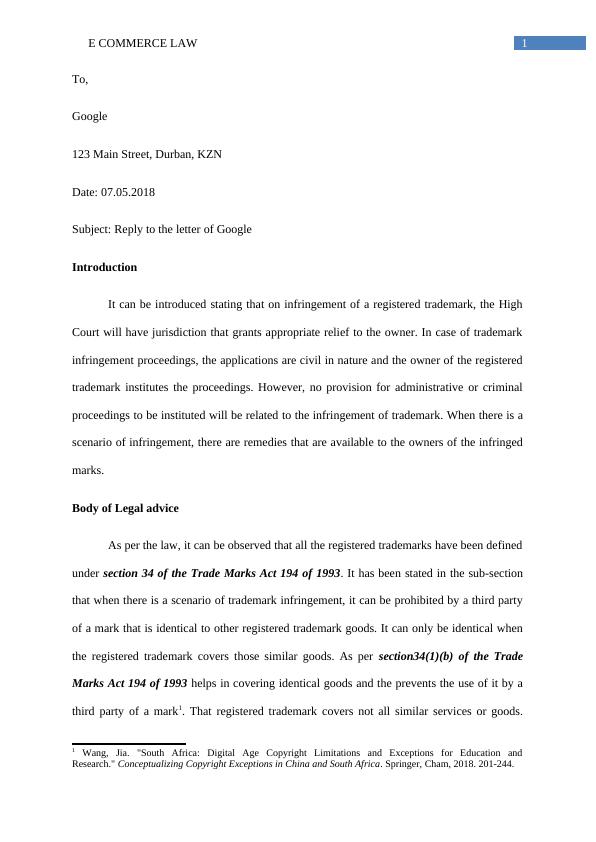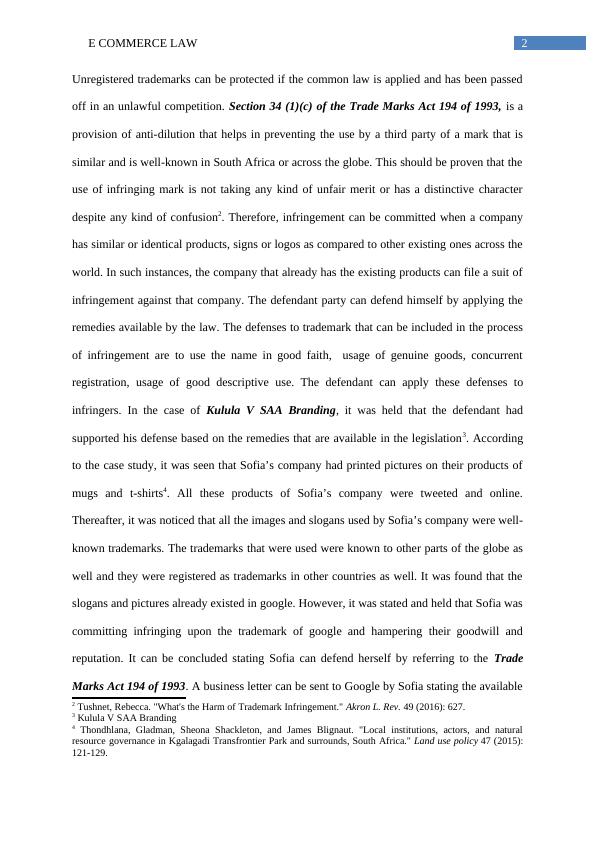E COMMERCE LAW E COMMERCE LAW 4 E Commerce Law Name of the Student Name of the University Author note To, Google 123 Main Street, Durban, KZN
6 Pages1331 Words228 Views
Added on 2021-06-14
About This Document
E COMMERCE LAW E COMMERCE LAW 4 E Commerce Law Name of the Student Name of the University Author note To, Google 123 Main Street, Durban, KZN Date: 07.05.2018 Subject: Reply to the letter of Google Introduction It can be introduced stating that on infringement of a registered trademark, the High Court will have jurisdiction that grants appropriate relief to the owner. It has been stated in the sub-section that when there is a scenario of trademark infringement, it can be prohibited
E COMMERCE LAW E COMMERCE LAW 4 E Commerce Law Name of the Student Name of the University Author note To, Google 123 Main Street, Durban, KZN
Added on 2021-06-14
ShareRelated Documents
End of preview
Want to access all the pages? Upload your documents or become a member.
(pdf) Intellectual Property Law
|10
|2529
|184
Infringement of Trademark Rights
|9
|2635
|75
Intellectual Property Law
|10
|3133
|245
UAE Trademark Law and Relevant Concepts
|6
|1361
|192
Marketing and Advertising Law
|5
|798
|48
Trademark Protection in Singapore
|8
|2555
|193



